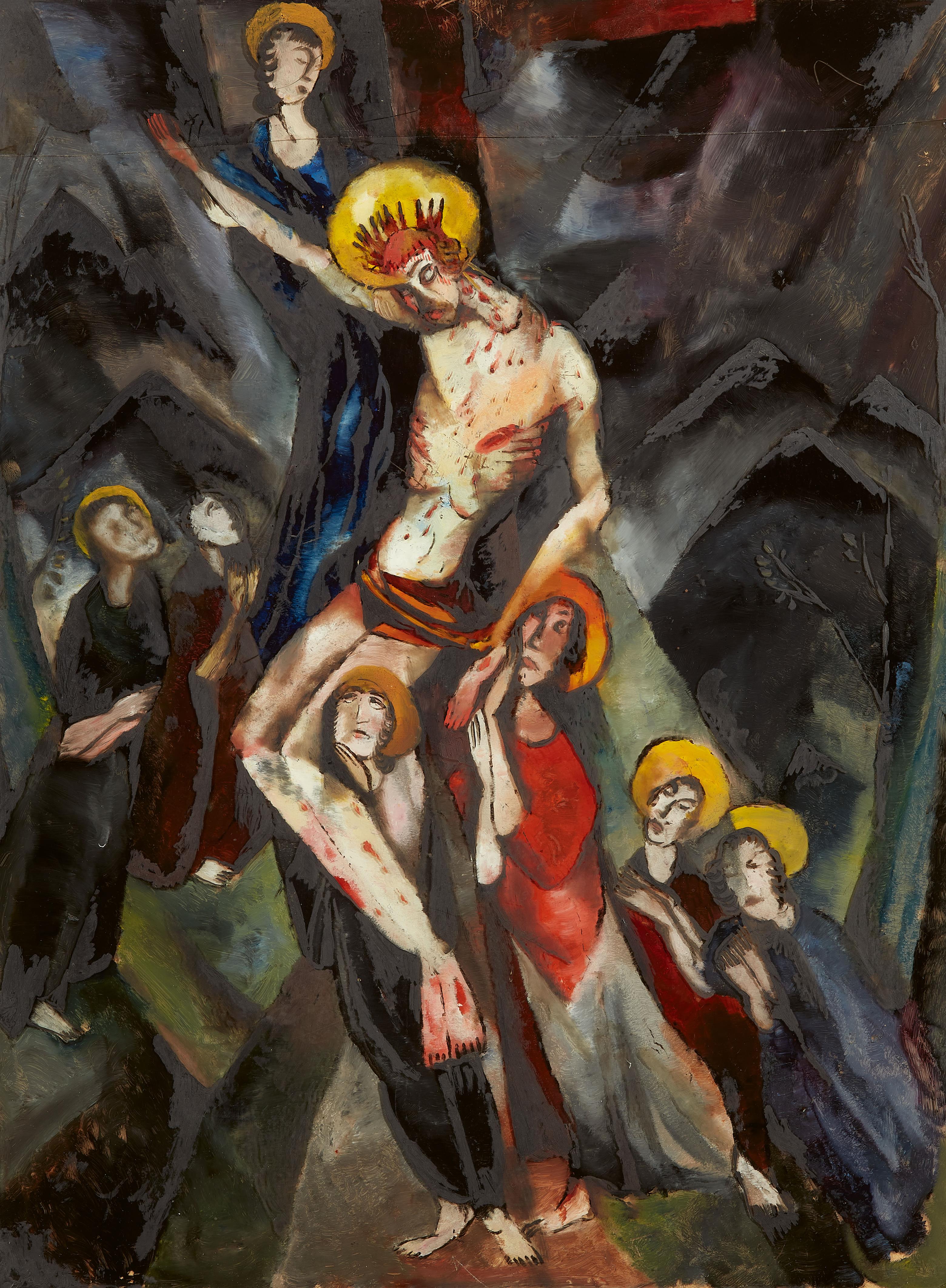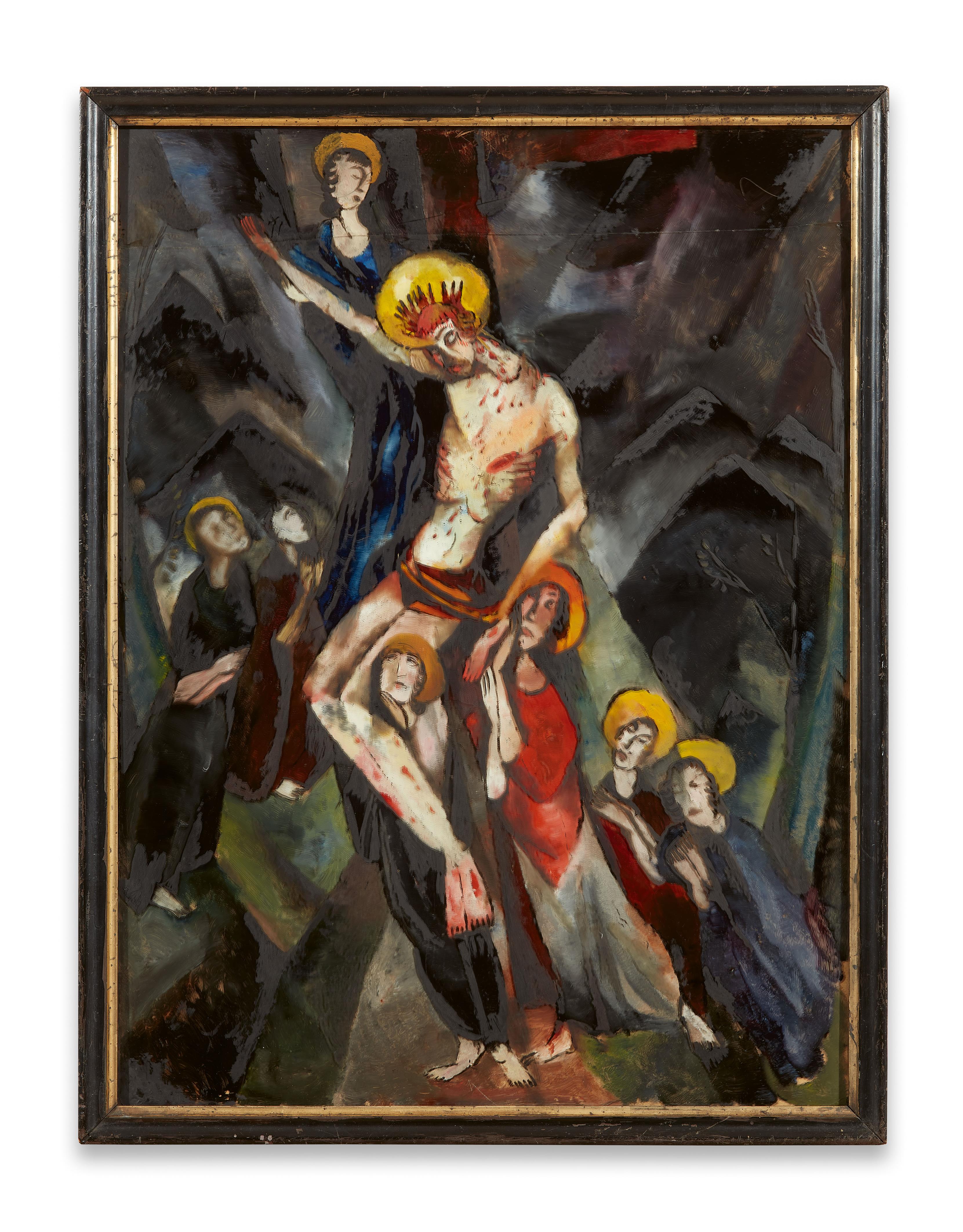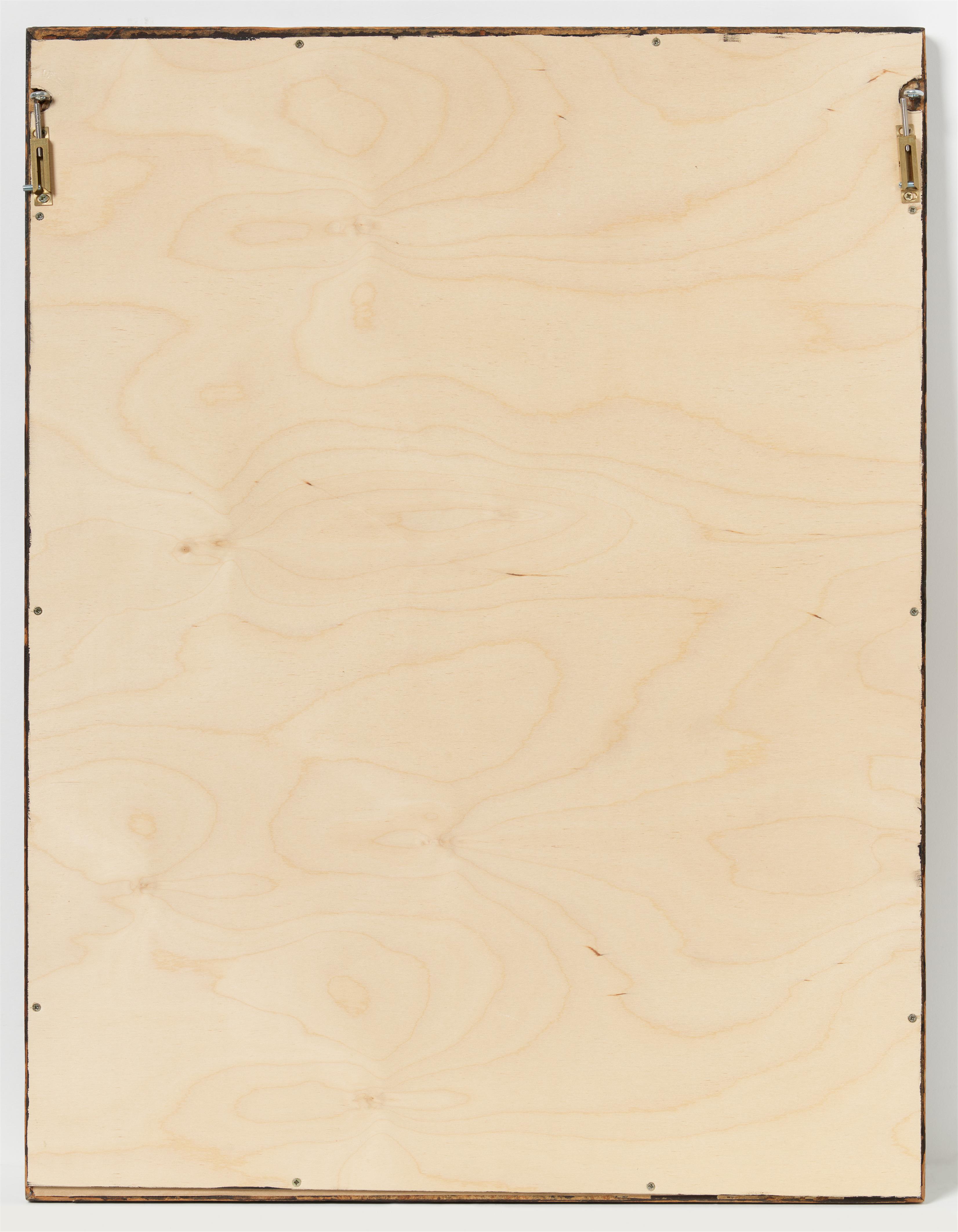Carlo Mense
Kreuzabnahme
1914/1915
Glass and reverse glass painting. 62.6 x 47 x 0.2 cm. Framed. Unsigned. - In good condition with fresh colours. A crack in the top of the glass was professionally restored in 2012, the lower right corner of the glass replaced.
During the period before and after the First World War, sacred themes experienced a Renaissance, particularly among artists in the predominantly Catholic Rhineland. In these times defined by shocks and political upheaval, painters like Heinrich M. Davringhausen and Heinrich Nauen were seeking the primitive and, in doing so, drawing on old traditions not just thematically but also in terms of technique, by reviving the woodcut and reverse painting on glass.
Carlo Mense, who was also from the lower Rhine, did not remain untouched by this development either. After training at the Düsseldorf academy of art and in Lovis Corinth’s studio in Berlin, he also began painting Christian themes in 1913. He discovered reverse painting on glass before the First World War, and he also selected this technique for the impressive “Kreuzabnahme” from the artist’s estate.
Set before a menacingly black-and-grey background the bright, maltreated body of Christ stands out in the centre of the composition. With the help of Mary and the red-robed Apostle John, the body is being removed from the cross and mourned by the saints surrounding it. In contrast to standard practice, Mense has painted not just on the reverse side but also on the front of the glass. The contrast between the saturated colours behind the glass and the matt tones seen on the front provides the hilltops and halos with an unusual three-dimensionality and a fascinating effect. Sheets of glass painted on both sides are extremely rare – and not just for Mense.
In 2012 Mense’s “Kreuzabnahme” could be seen on loan in the major exhibition “El Greco and Modernism”. Comparing this “Kreuzabnahme” with the compositions of El Greco’s late period, such as his “Christ on the Cross” of 1613 or his “Crucifixion”, it becomes obvious how – in addition to the elongated figures and Biblical personages – the Spanish master has also provided Mense with orientation in terms of his choice of colours and use of light. The art of El Greco additionally reinforced the Rhineland expressionists in their development of their figures’ expressiveness.
Catalogue Raisonné
Drenker-Nagels 238
Certificate
In 2017/18, the reverse glass painting was part of the Volkswagen Foundation research project "Reverse Glass Painting as a Technique of Classical Modernism 1905-1955", Museum Penzberg - Campendonk Collection, Penzberg.
Provenance
Max Nienhaus, Cologne (Mense estate); subsequently in family ownership, North Rhine-Westphalia
Literature
Klara Drenker-Nagels, Carlo Mense. Sein Leben und sein Werk von 1909 bis 1939, Cologne 1993, pp. 46 f.; Natalia C.A. Seggerman, Festigung von blätternden Malschichten an Hinterglasbildern am Beispiel von "Menschen am Fluß", 1913 von Carlo Mense, Diplomarbeit der Fachhochschule Köln 2000, pp. 80 f.; Klara Drenker-Nagels, Carlo Mense: Kunstentwicklung zwischen 1915 und 1919, Exhib. cat. Carlo Mense. Der Fluss des Lebens, August Macke Haus Bonn 2000, pp. 92 f., with illus.
Exhibitions
Bonn 1920 (Städtisches Museum Villa Obernier), Christliches Motiv und künstlerisches Zeitgewand, cat. no. 8; Düsseldorf 2012 (Museum Kunstpalast), El Greco und die Moderne, p. 305, with colour illus.; Penzberg 2017 (Museum Penzberg - Campendonk Collection), Tiefenlicht. Malerei hinter Glas von August Macke bis Gerhard Richter, pp. 11, 71, with colour illus.






